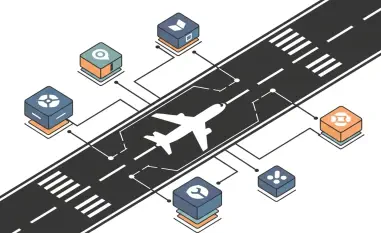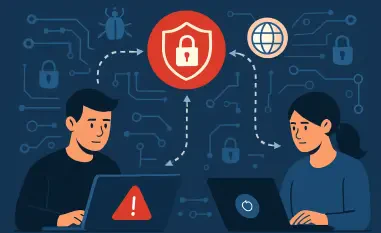What happens when the digital walls protecting an organization are under relentless attack, yet the funds to reinforce them are drying up? In 2025, cybersecurity teams across the globe are grappling with an alarming reality: cyber threats are evolving at a breakneck pace, while budgets to counter them are shrinking under economic strain. This financial chokehold is not just a challenge—it’s a crisis forcing a dramatic pivot in how security is approached, with artificial intelligence (AI) emerging as a critical, yet complex, lifeline. Dive into this pressing issue to uncover why every dollar counts more than ever in the battle against cybercrime.
The significance of this shift cannot be overstated. As cybercrime becomes a professionalized industry with sophisticated tools available as a service, organizations face unprecedented risks, from data breaches to nation-state attacks. Tight budgets mean fewer resources for human expertise and traditional defenses, pushing companies toward AI-driven solutions to fill the gap. This story matters because it reveals a turning point in cybersecurity—a moment where financial constraints are reshaping strategies, operations, and even global trust in technology vendors, with implications for every business connected to the digital world.
When Every Dollar Counts: The Cybersecurity Budget Crunch
In boardrooms and IT departments alike, the tension is palpable. Cybersecurity funding, once seen as a non-negotiable priority, is now often the first line item to face cuts amid economic uncertainty. Organizations are caught in a vise—needing to defend against increasingly cunning threats while managing limited resources. This crunch isn’t just about numbers; it’s about the stark choices security teams must make daily, deciding which vulnerabilities to address and which to risk leaving exposed.
The scale of this challenge is evident in the numbers. Reports indicate a dramatic slowdown in budget growth, with economic volatility and inflation cited as key culprits. Global spending on information security, while still climbing from 3 billion in 2025 to a projected 0 billion by 2027, falls short of matching the pace of emerging threats. For many companies, this means doing more with less, a reality that is reshaping the very foundation of digital defense.
This financial squeeze is more than a temporary setback; it’s a catalyst for transformation. Security leaders are being forced to rethink traditional approaches, seeking innovative ways to stretch limited funds. The pressure to adapt is not just internal—external expectations from stakeholders and regulators add another layer of complexity, making the stakes higher than ever in this high-wire act of balancing cost and safety.
The Perfect Storm: Why Cybersecurity Budgets Are Stalling
A confluence of global challenges has created a perfect storm for cybersecurity funding. Economic factors like market instability and fluctuating interest rates have tightened corporate purses, with many organizations prioritizing short-term profitability over long-term security investments. Geopolitical tensions further complicate the landscape, as nation-state cyber aggression escalates, adding urgency to an already strained situation.
Beyond economics, the rise of cybercrime-as-a-service has turned digital threats into a booming underground economy. Hackers no longer need advanced skills—readily available tools and services lower the barrier to entry, amplifying the volume and sophistication of attacks. For security teams, this means facing a relentless wave of adversaries while budgets remain stagnant, creating a dangerous mismatch between threat and defense capability.
This storm shows no signs of abating. As companies grapple with these external pressures, internal priorities often shift away from cybersecurity to more immediate operational needs. The result is a growing gap in protection, leaving organizations vulnerable at a time when the cost of a breach—both financial and reputational—has never been higher. This dynamic sets the stage for a radical rethinking of how security is resourced and deployed.
The Ripple Effects of Tight Budgets on Security Operations
The impact of constrained budgets reverberates through every layer of security operations. Staff shortages are a glaring issue, with overworked teams struggling to keep up with mounting alerts and incidents. Morale plummets as professionals face burnout, while critical initiatives—such as upgrading outdated systems or conducting thorough risk assessments—are delayed or abandoned altogether, heightening exposure to attacks.
This operational strain extends beyond individual organizations. A focus on in-house threats often overshadows broader national cybersecurity concerns, weakening collective defenses against systemic risks. Policy uncertainties, particularly in the U.S., exacerbate the problem, with reduced funding for key agencies hampering threat-sharing efforts. The ripple effect is a fragmented security ecosystem where gaps in collaboration leave everyone more vulnerable.
Globally, trust in technology providers is also eroding under these pressures. In regions like the UK, caution toward U.S. vendors is growing, with 79% of respondents expressing reservations and over half shifting to local or EU-based suppliers. This trend toward regional self-reliance reflects a deeper fracture in the global cybersecurity landscape, driven by the need to mitigate risks amid limited resources and uncertain partnerships.
Voices from the Field: Expert Insights on the Budget-AI Nexus
Industry leaders are raising critical concerns about the intersection of budget cuts and the rush to adopt technology. Amy Lindenmeyer, CFO at Keeper Security, points out that economic downturns intensify the challenge for executives to balance efficiency with profitability, often sidelining cybersecurity in the process. Her perspective highlights a systemic issue: security is seen as a cost rather than an investment during tight times.
Matt Lee from Pax8 sheds light on the practical response to these constraints, noting that overstretched teams are increasingly relying on AI for tasks like alert triage. “It’s not just about innovation—it’s about survival,” he emphasizes, capturing the urgency behind this technological pivot. AI’s ability to automate routine processes offers a glimmer of hope, allowing limited staff to focus on higher-level strategy, but it comes with caveats.
Experts also warn of the risks tied to this reliance. Reports caution that while AI can alleviate immediate burdens, it expands the attack surface through vulnerabilities like agentic AI systems. The consensus is clear: automation is a powerful tool, but it must be wielded carefully to avoid creating new weaknesses or diminishing the role of human expertise in an already understaffed field. These voices paint a picture of cautious adaptation in a resource-scarce environment.
Navigating the Shift: Strategies for AI-Driven Cybersecurity on a Budget
For organizations navigating this turbulent landscape, adopting AI doesn’t have to be a leap into the unknown—it can be a strategic lifeline with careful planning. Start by targeting tools that automate repetitive tasks such as threat detection and incident response. This frees up scarce human resources for complex decision-making, maximizing impact without inflating costs.
Risk management remains paramount in this transition. Conducting detailed assessments to pinpoint where AI can address gaps—while ensuring secure integration—is essential to avoid introducing fresh vulnerabilities. Regular updates and patches to AI systems should be non-negotiable, as outdated tools can become liabilities rather than assets in a rapidly evolving threat environment.
Building internal capacity is another key pillar. Investing in training for existing staff to oversee AI systems ensures that human judgment remains central to defense strategies. Additionally, forming cost-effective partnerships with regional vendors can diversify reliance and enhance resilience, as seen in the UK’s pivot to local suppliers. These practical steps provide a blueprint for leveraging AI effectively, even when financial resources are stretched thin.
Looking back, the journey through 2025 revealed a cybersecurity sector at a critical crossroads, where economic pressures and escalating threats collided with unprecedented force. Reflecting on this period, the forced pivot to AI-driven defenses stood out as both a necessity and a gamble, balancing immediate relief against long-term risks. Moving forward, the lesson was clear: organizations needed to prioritize strategic investments in both technology and talent, ensuring that automation complemented rather than replaced human oversight. The path ahead demanded a commitment to adaptability—fostering partnerships, upskilling teams, and rigorously evaluating AI tools—to build a resilient digital future in an era of relentless constraints.













